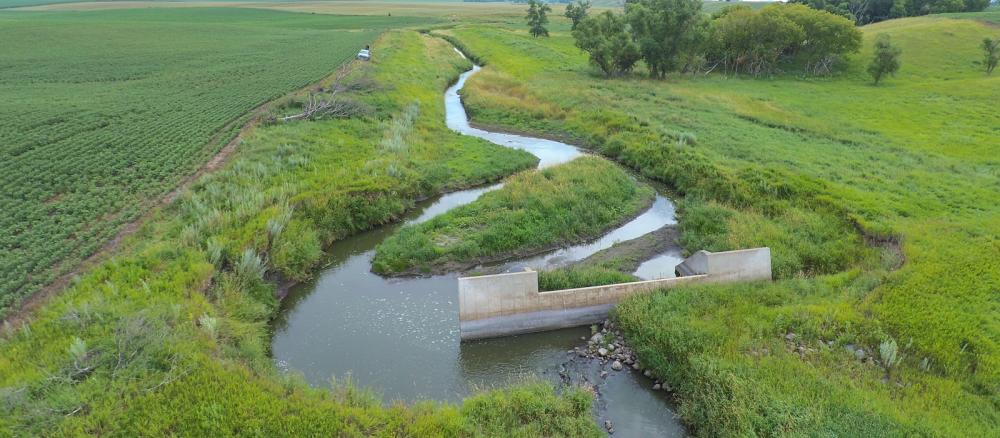Fish and other aquatic life need healthy habitats to survive and prosper. Measuring their species and number in a body of water tells us a lot about the water quality and habitat in our lakes and streams.
In Drywood Creek, a tributary of the Pomme de Terre River in western Minnesota, those measures have improved slightly over the past 10 years, according to an MPCA report on water quality in the Pomme de Terre River Watershed.
That trend may continue with the recent removal of an old dam on Drywood Creek. It’s part of a statewide effort by the Department of Natural Resources (DNR) to remove small dams that are failing or causing undue obstructions. Removing old dams restores fish passage, reduces erosion of sediment that clouds the water, and helps restore the floodplain to hold back and filter water.
“While there’s been little change in water quality over the past 10 years in the Pomme de Terre watershed overall, the Drywood Creek subwatershed shows an improvement in fish and aquatic insects,” says Aaron Onsrud, a biological monitoring specialist with the MPCA. “Removing old dams restores connectivity to the watershed, which is good for aquatic life.”
The recent MPCA report gives an update on water quality monitoring in the Pomme de Terre River Watershed that stretches back more than 20 years. It was the first among Minnesota’s 80 watersheds to use a watershed-wide approach for assessing water quality and proposing protection and improvement strategies. Under the watershed approach, the MPCA gauges the health of watersheds every 10 years, documenting water quality problems and working with partners to solve them.
The dam removal is a good example of the kind of work needed to address water quality issues identified in the update report, and put into action the measures called for in a watershed plan, created by the six counties with portions in the Pomme de Terre River Watershed.
In August 2020, the Minnesota Board of Water and Soil Resources (BWSR) approved the Pomme de Terre River Association (PDTRA) Comprehensive Watershed Management Plan. Since 1981, the association has guided watershed work for the six counties: Otter Tail, Douglas, Grant, Stevens, Swift, and Big Stone.
When the dam was built in 1971, the goal was to prevent rough fish from migrating upstream to Drywood Lake southwest of Morris in Stevens County. It didn’t work; carp could get over the dam at times, while native species could not. This lack of connectivity harms fish populations upstream.
By 1997, erosion caused the dam to fail, leaving a channel around the concrete structure. The creek below the dam had been straightened from the natural meander. Without its natural curves to slow water flow, the creek suffered from greater streambank erosion, and restricted access for flood flows.
“Since the 1990s severe bank erosion at each end of the Drywood Creek dam sent more sediment downstream,” said Andy Albertsen of the Swift County Soil and Water Conservation District (SWCD) office. “The current project will drastically reduce bank erosion at the dam site, restore the original channel to its pre-altered condition, and restore the channelized area to its pre-altered condition.” Also, the floodplain was graded to the appropriate elevation and seeded with native grasses and wildflowers.
The Swift SWCD, PDTRA, DNR, and a local landowner cooperated to remove the dam and restore the natural waterway for a total project cost of $127,579, provided by a BWSR grant. The Lessard-Sams Outdoor Heritage Council provided $50,000 as part of the Clean Water Land and Legacy Amendment.
“I walked along there three times this summer, and I noticed more crayfish and king fishers,” says Brady Swanson of the DNR.
Armed with additional data on where restoration strategies are working and where more work is needed, partners in the Pomme de Terre Watershed continue their efforts to make the waters healthier for fish, bugs, and people.
